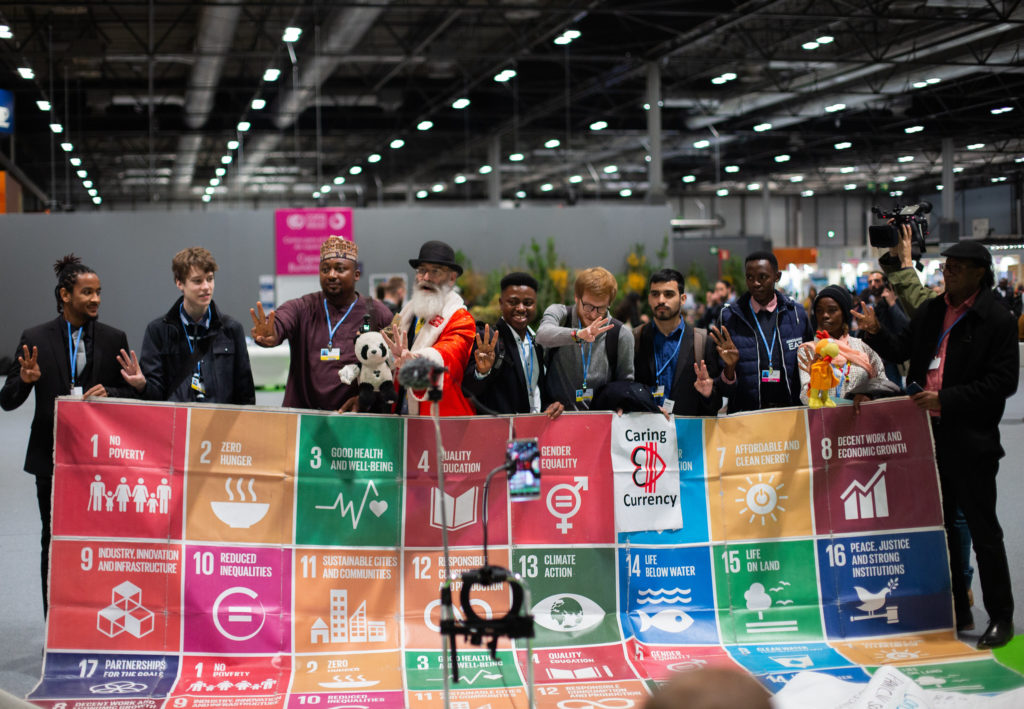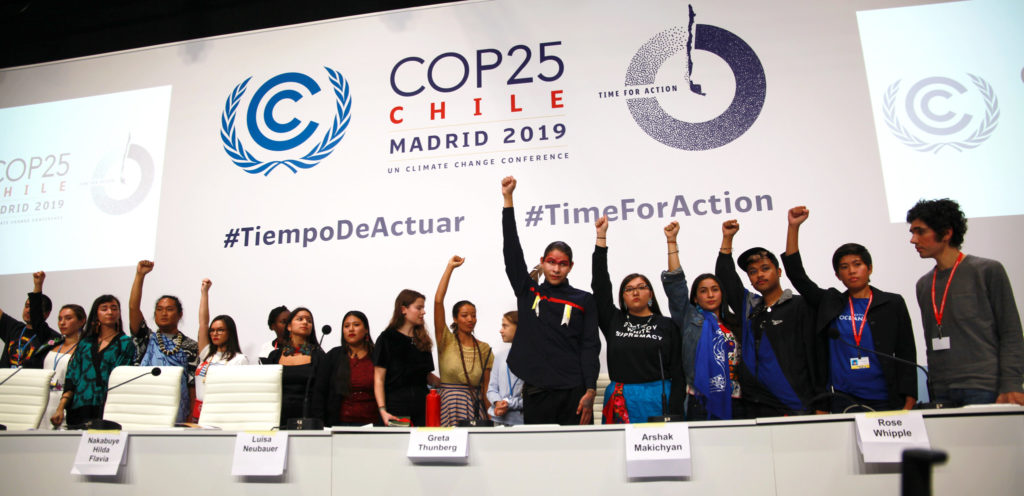From the rapid melting of Greenland to the mega blazes wiping out large portions of the Amazon, California, Africa, and Australia, and reports that the sea level rise in Trinidad and Tobago has almost doubled in the past two decades; this year, we’ve seen the world come its knees at the hands of the climate emergency.
With bated breath, over 29,000 registered attendees and millions around the world waited on the outcome of the United Nations’ 25th climate negotiations, with the hope that ambitions would be raised.
They say that with great power comes great responsibility. This year’s COP25 was a perfect example of powerful nations not living up to their responsibilities to address climate change. It was a letdown of great proportions, as negotiations dragged on for the first week and a half, gradually increased in pace with the arrival of Ministers, and then fell flat on its face as they closed at 1:55pm on Sunday 15th December (nearly 44 hours after its scheduled end of 6pm on Friday 13th December), with little ambition and deferral of critical issues to COP26, in Glasgow, November 2020.

Civil Society Responses on COP25
The following statements echo some civil society responses at the close of COP25.
Youth: “We are disappointed by the lack of progress on mobilising funds for loss and damage for the most vulnerable on common time frames…we need to move fast.”
Indigenous Peoples: “We know the legitimacy of our voices, and it’s about time that you hear our stories, learn our histories, stop taking up space with your false solutions and get our of our way.”
Women: “We cannot allow any decision on article six go forward that would infringe on rights and ultimately not advance the goals of the convention. We expect Parties to continue this goal, going forward. Every time you undermine human rights you undermine gender equality.”
Coalition Responses on COP25
The Alliance of Small Island States (AOSIS) led the call for ramped up ambition throughout COP25. They also issued a clarion call for “Our Decade of Ambition,” and stood up against belittling and ignoring the issues of Loss and Damage, 1.5 degree target, and Article 6 decisions that are inconsistent with Mitigation efforts and transparency.
AOSIS did not mince words in expressing disappointment with the outcome of the two weeks of negotiations, stating –
“As people living on the frontiers and in the epicentres of climate risk and vulnerability, we know precisely what ambitious action looks like and how it must be supported. as COP25 draws to a close and islands wade through and beyond the glitzy public relations and buzzwords, we are astounded. We are appalled and dismayed at the failure to come to a decision on critical issues, the scale of inaction, ineffective processes and some Parties’ yeoman commitment to obstruction and regressive anti-science positions. Climate action is not a wish. It is a matter of survival and it must be funded.”
As the two weeks stuttered to a close, with little decisive climate action, we saw the formulation of the San Jose Principles for High Ambition and Integrity in International Carbon Markets, which currently stands at a membership of 31 countries, three of which are Caribbean nations (Trinidad and Tobago, Grenada, and Belize). These countries aim to work together to secure an ambitious outcome is delivered in the future, on the Article 6 negotiations on Carbon Markets.
Mrs. Camille Robinson-Regis, Hon. Minister of Planning and Development of the Republic of Trinidad and Tobago, said,
“The importance of environmental integrity and overall mitigation are essential and critical elements of the market rules under Article 6 of the Paris Agreement. The market must be governed by robust rules to inspire the confidence of the private sector and state and non state entities to participate fully and so ensure that operational and effective market mechanism under Article 6 of the Paris Agreement. To do otherwise would undermine the utility of the market mechanism to contribute to the achievement of the objectives of the Paris Agreement. Trinidad and Tobago supports such a robust system of rules.”
This is a sentiment matched by the nations aligned under this coalition.
Consequences of COP25 Failures
UN secretary general António Guterres said he was “disappointed” with the results of COP25 and that “the international community lost an important opportunity to show increased ambition on mitigation, adaptation & finance to tackle the climate crisis.”
Essentially, failure means that the 2015 Paris Climate Agreement will come into force on January 1st 2020, and could sink because of the gaping holes that now exist. It will be held back due to lack of sufficient climate funds to live up to the pledges made by most developing countries to the Paris Agreement to control carbon emissions and adapt to climate impacts. These pledges require money, money that depends on developed countries, who continue to defer the issue.

A headline outcome of the negotiations was supposed to be Carbon Markets. However, at the end of COP25, there was little progress because there was no agreement new rules governing the new global carbon market.
A minuscule two paragraphs sum up plans to continue talks in 2020 and acknowledged the draft text from this year’s negotiations as a basis for future talks. That being said, none of these texts have found consensus. Australia and Brazil continued to push for a system with loopholes which allowed initial double counting of emissions reductions and trading of Kyoto-era credits – explained below. But other countries say this would undermine the entire market.
What happens next?
Countries agreed in Paris in 2015 to revisit their climate pledges by 2020. But many countries were pushing this year for a clear call for all countries to submit more ambitious climate pledges next year. On the flip side, countries such as China and Brazil opposed the placement of strict obligations on countries to submit enhances pledges next year, based on their belief that it should be each country’s own decision. They argued the focus should be on pre-2020 action by developing countries to meet their previous pledges.
As talks came to an end, tensions grew after a draft decision removed any call for countries to “update” or “enhance” their climate plans by 2020. Instead, it only invited them to “communicate” them in 2020 – far weaker language which put no obligation on enhanced ambition.
In the end, the final text added some more ambitious wording back in, pointing directly to the emissions gap between what country pledges currently add up to and what is needed to keep global temperature rise well below 2C. It also “recalls that new climate pledges should “represent a progression” beyond previous pledges and represent the highest possible ambition. This text was an improvement on previous drafts but “still weak”, according to Naoyuki Yamagishi of WWF Japan.
It’s worth noting that 80 countries have already signalled plans to enhance their climate pledges next year. Even as the talks fell into disarray this week, the EU agreed to a “climate neutral” target for 2050, joining 73 countries who have signed up to a similar goal.
These failures represent increased pressure on COP26. Next year it’s UK’s turn to host #COP26. Will it be ready? Governments need to put their countries on the path to zero emissions.



















